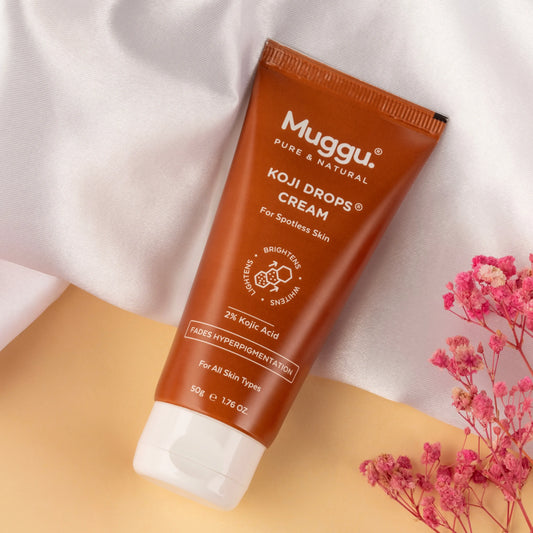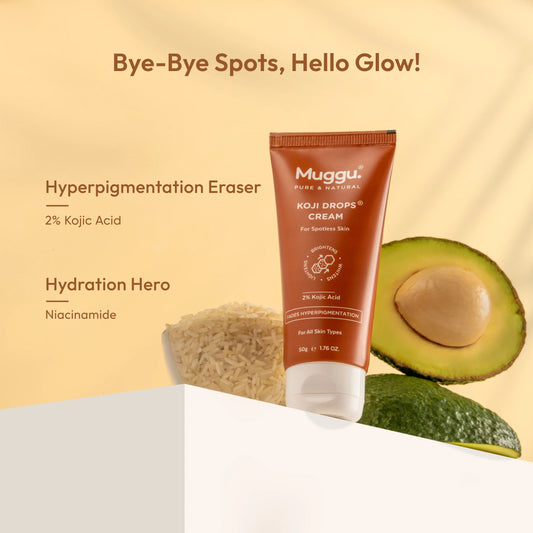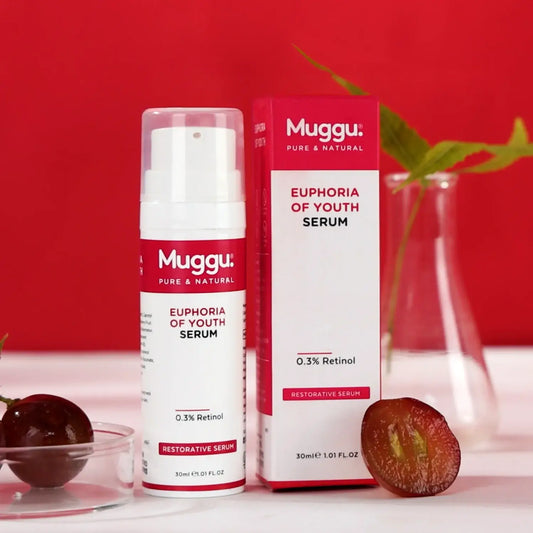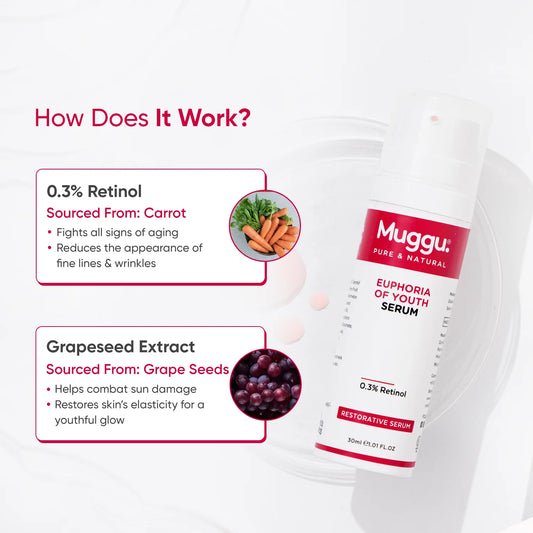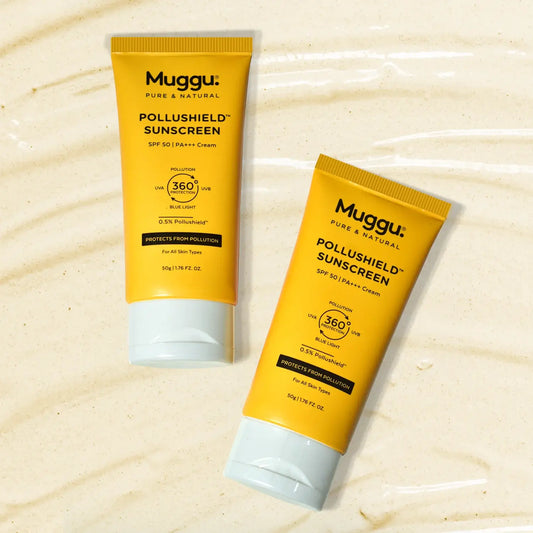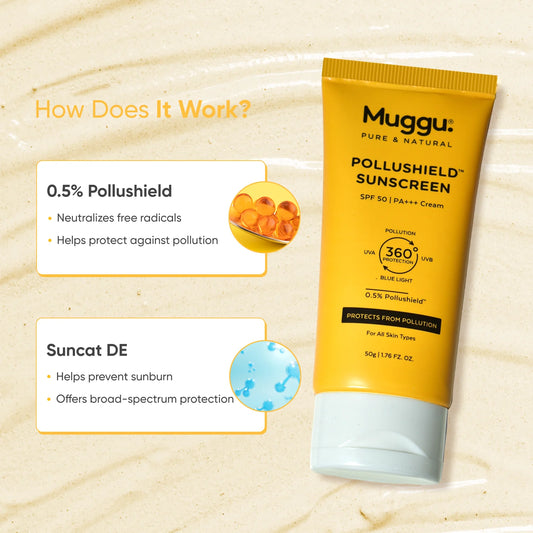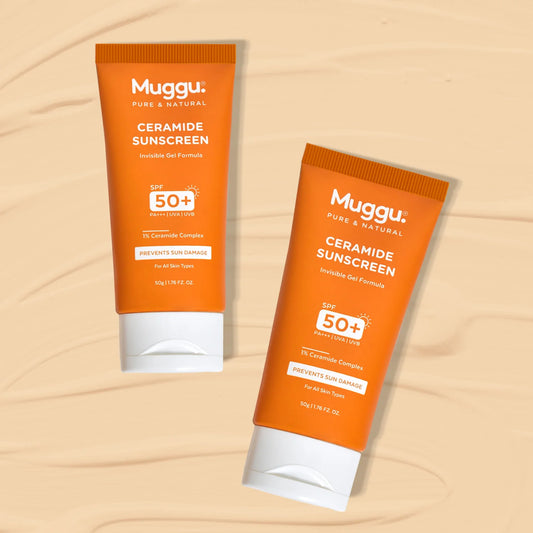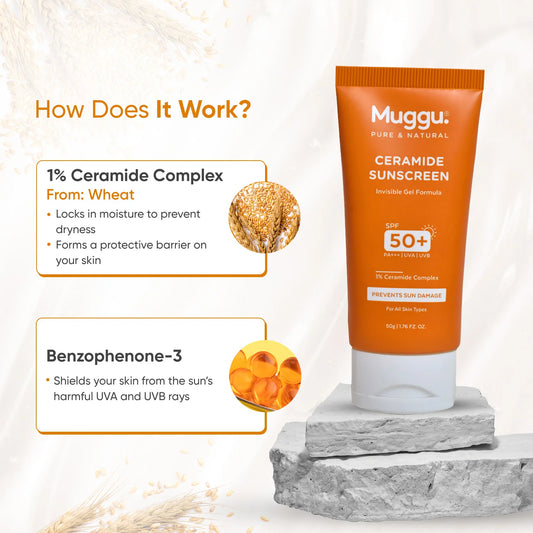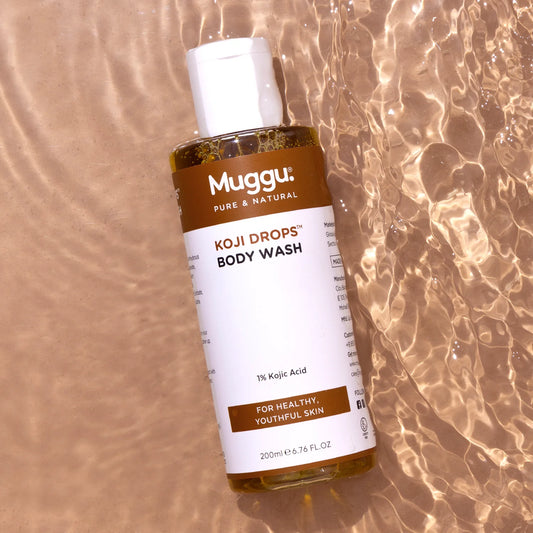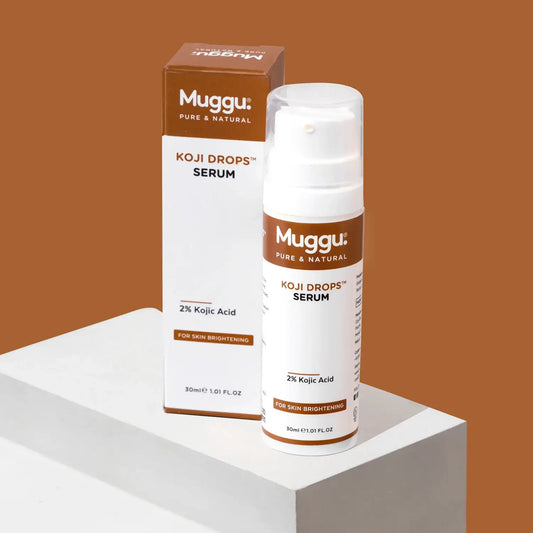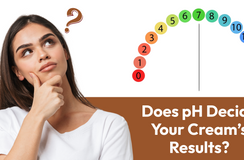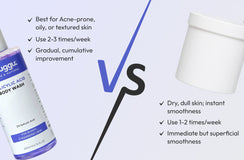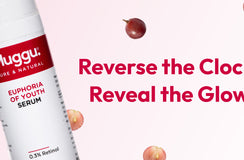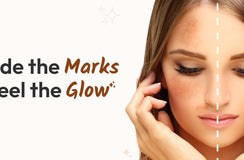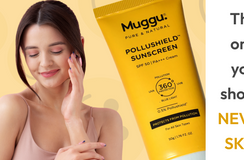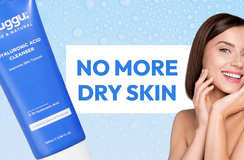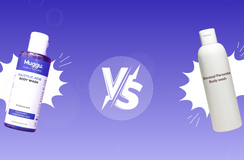Are you struggling with stubborn dark spots, acne marks, or dull-looking skin? You're not the only one. When looking for ways to get clear, glowing skin, two names pop up everywhere: Kojic Acid and Vitamin C. Both are famous for making skin brighter, but they work very differently. This guide will simply explain the whole Kojic Acid vs Vitamin C confusion. We will help you choose the right one to finally fade those dark spots and find the best solution for your hyperpigmentation.
What Are Kojic Acid and Vitamin C?
Let's understand what these ingredients are and how they actually work on your skin.
1 Kojic Acid
Where it comes from: Kojic Acid is a natural ingredient that comes from different types of fungi. It’s a byproduct when things like mushrooms or rice (for sake) are fermented.
How it works: Its main job is to block an enzyme in our skin called tyrosinase. This enzyme is what produces melanin (the pigment that causes dark spots). By blocking it, Kojic Acid not only helps to lighten existing spots but also stops new ones from forming.
How you can find it: It's easily available in products like creams, serums, and even soaps made for treating dark spots.
2 Vitamin C
Where it comes from: Vitamin C which is also known as Ascorbic Acid is a strong antioxidant found in regular fruits like oranges and lemons, and in green vegetables. It's great for our health and a hero ingredient in skincare.
How it works: Vitamin C’s main power is fighting off damage from free radicals (caused by sun and pollution) that can lead to pigmentation. It also boosts collagen, which keeps the skin firm and youthful. It helps in preventing new spots from appearing.
How you can find it: The most popular form is a Vitamin C serum. Look for one with L-ascorbic acid for the best results.
Benefits Comparison
While both promise brighter skin, they are good at different things. Let's compare them.
|
Benefit
|
Kojic Acid
|
Vitamin C
|
|
Dark Spots & Hyperpigmentation
|
Very effective and often gives faster results on stubborn spots and marks.
|
Good for fading spots and preventing new ones, but usually takes a bit longer to show results.
|
|
Overall Skin Brightness
|
Best for fixing uneven skin tone and lightening specific dark patches.
|
The number one choice for getting an all-over glow, radiance, and healthy-looking skin.
|
|
Anti-Aging
|
It has some antioxidant benefits, but anti-aging is not its main purpose.
|
A super-strong antioxidant that protects from damage and boosts collagen to reduce fine lines.
|
|
Skin Sensitivity
|
Can sometimes cause irritation, redness or dryness, especially if the product is very strong.
|
Generally gentler, but strong serums (above 15%) can feel tingly or irritate sensitive skin.
|
|
Acne-Prone Skin
|
It is antibacterial, which can help reduce pimples and breakouts.
|
It's usually fine, but some formulas can feel a bit heavy or cause irritation if your skin is very sensitive.
|
As many Indian dermatologists would advise, "If you have stubborn spots like sun spots (jhaiyan) or old acne marks, Kojic Acid is a great targeted treatment. But if you want overall brightness, protection from daily damage, and anti-aging benefits, nothing beats Vitamin C."
Another big difference is stability. Kojic Acid products are quite stable. Vitamin C, on the other hand, can spoil quickly if it comes in contact with air or light. That’s why good Vitamin C serums always come in dark, light-proof bottles.
Side Effects & Precautions
Both ingredients are safe, but you need to use them correctly to avoid any problems.
-
Kojic Acid: Always do a patch test on a small area first. It can cause redness or itching for some people. Don't use it on cuts or broken skin. Using sunscreen every day is compulsory, as it makes your skin more sensitive to the sun.
-
Vitamin C: Do a patch test here too, especially with a strong serum. Make sure the product is in a dark bottle. If you have sensitive skin, start with a product that has less than 10% Vitamin C.
For both, it’s best to start by using them 2-3 times a week before you start applying them daily.
Application Tips for Best Results
How and when you use these products can make a big difference.
Morning or Night Routine?
-
AM (Morning): Use your Vitamin C serum in the morning after washing your face. It will shield your skin from sun and pollution damage during the day. Always follow it up with a moisturiser and a good sunscreen (SPF 30 or higher).
-
PM (Night): Use your Kojic Acid product at night. This gives it time to work on your pigmentation overnight without any disturbance from sunlight.
Layering Tips: The rule is simple: apply thinner products before thicker ones. So, a serum (like Vitamin C) should be applied to clean skin before any heavy cream or moisturiser.
How Often to Use: Start with a low-strength product (1% Kojic Acid, 10% Vitamin C) and use it on alternate days. If your skin feels fine after a couple of weeks, you can slowly start using it every day. Avoid using them at the same time as other strong acids (like glycolic acid) to prevent skin irritation.
Can You Use Both Together?
Yes, absolutely! In fact, using them together is a very smart way to get even better results. They boost each other's effects.
Here is a very easy routine you can follow:
This way, you get the benefits of both without making your skin stressed or irritated.
Enhance Your Skincare Routine with Muggu Kojic Acid Products
If dark spots, hyperpigmentation, or uneven skin tone are your concerns, Muggu’s Kojic Acid range can help you achieve brighter, clearer skin safely and effectively.
-
Koji Drops™ 2% Kojic Acid Cream – Suitable for both face and body, this cream helps reduce pigmentation while keeping your skin nourished and smooth.
-
Koji Drops™ Body Wash – A gentle and very effective body wash designed to fade dark spots and even out skin tone.
-
Koji Drops™ Serum 2% Kojic Acid – A concentrated serum that targets stubborn dark spots for faster brightening results.
Use these products consistently, paired with sunscreen, to maximize your skin’s natural glow.
Expert Recommendations
Dermatologists say the "better" ingredient really depends on your main problem. For tough, old dark spots, Kojic Acid is often the expert choice. For overall skin glow, anti-aging, and preventing future skin damage, Vitamin C is the best option. For most people who want an all-round improvement, using both in a smart routine is the ideal solution. If you have very sensitive or acne-prone skin, it’s always best to ask a dermatologist for advice.
FAQs
-
Can I use Kojic Acid and Vitamin C if I have sensitive skin? Yes, but be careful. Start with products that have low strength, do a patch test, and use them on alternate days first to see how your skin reacts.
-
Which one works faster for dark spots? Kojic Acid usually shows faster and more visible results on existing dark spots because it directly targets melanin.
-
Can I use them every day? Yes, once your skin gets used to them. Start slowly and scale up to daily use if you don't feel any irritation.
-
Do I really need to use sunscreen? Yes, 100%. Sunscreen is not optional. Both these ingredients can make your skin more prone to sun damage, and without sunscreen, your dark spots will come back.
Conclusion
When it comes to glowing, even-toned skin, Kojic Acid and Vitamin C are the ultimate duo. Here, Kojic Acid is the fighter that targets stubborn dark spots and pigmentation, while Vitamin C is a shield that protects your skin from pollution, sun damage, and free radicals. Using both strategically can give you the best results, but patience is key—visible changes usually appear in four to six weeks. Consistency is important, and in India’s sunny climate, daily sunscreen is very important to protect your skin and maintain your bright, healthy glow.
